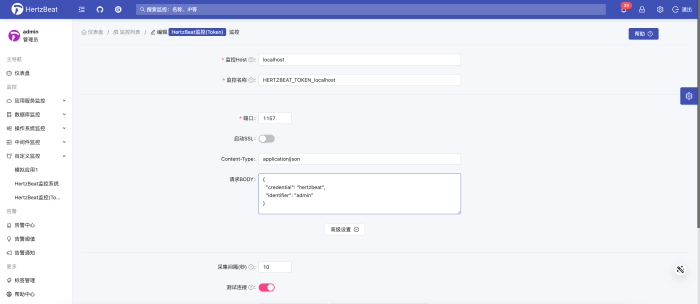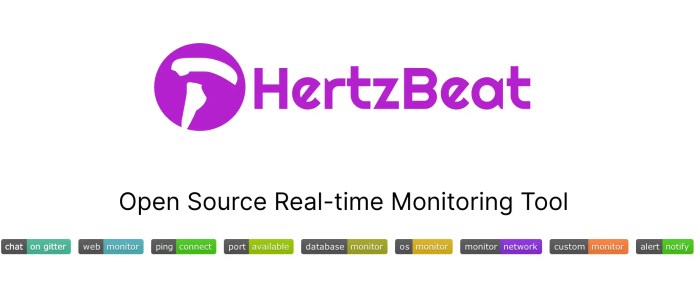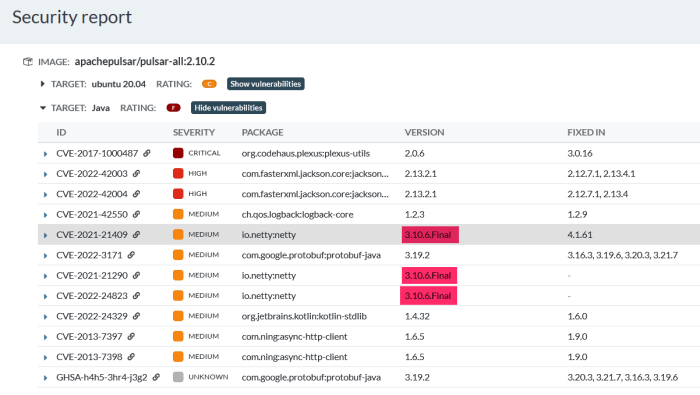Apache Hertzbeat vulnerability: Sounds scary, right? But before you panic and start frantically Googling “how to uninstall Hertzbeat,” let’s break down what this actually means. Apache Hertzbeat, that handy monitoring tool, isn’t immune to the sneaky world of cybersecurity threats. From authentication flaws to injection vulnerabilities, the potential for trouble is real. We’ll explore the common attack vectors, the damage they can inflict, and—most importantly—how to patch those holes before things get messy.
This isn’t just a technical deep dive; we’ll walk you through real-world (or at least, highly realistic) scenarios of Hertzbeat exploits. We’ll show you how attackers might try to leverage weaknesses, and—more importantly—how you can stop them in their tracks. Think of it as a cybersecurity survival guide specifically for your Hertzbeat setup. We’ll cover everything from basic security best practices to advanced auditing techniques, ensuring your system is as fortified as Fort Knox (okay, maybe not *that* secure, but pretty darn close).
Introduction to Apache Hertzbeat

Source: apache.org
Apache Hertzbeat is an open-source, lightweight, and powerful monitoring system designed for distributed systems. It excels at providing real-time insights into the health and performance of your infrastructure, making it a valuable tool for DevOps teams striving for efficient system management. Its ease of use and robust feature set make it a compelling alternative to more complex monitoring solutions.
This monitoring system offers a comprehensive view of your infrastructure’s health, allowing you to proactively identify and address potential issues before they impact users or services. It’s particularly well-suited for microservice architectures and cloud-native environments, where rapid scaling and dynamic resource allocation are common.
Architecture and Key Components
Hertzbeat’s architecture is built around a modular design, allowing for flexibility and scalability. The core components include the Hertzbeat server, which collects and processes data; various agents deployed across your infrastructure to gather metrics; and a user-friendly dashboard for visualization and analysis. Data is typically transmitted using protocols like HTTP and gRPC, ensuring efficient communication across different network environments. The server manages the collection, storage, and processing of monitoring data, providing a centralized view of the entire system. The agents are responsible for collecting metrics from specific nodes and reporting them back to the server. These agents are designed to be lightweight and resource-efficient, minimizing their impact on the monitored systems. The dashboard offers real-time visualization of metrics, allowing for easy identification of potential problems and trends.
Deployment Scenarios
Hertzbeat’s adaptability makes it suitable for a wide range of deployment scenarios. It can be deployed in cloud environments like AWS, Azure, and Google Cloud Platform, easily integrating with existing cloud infrastructure. It’s also well-suited for on-premise deployments, offering the flexibility to monitor both physical and virtual servers within a local data center. Furthermore, Hertzbeat’s containerized deployment (using Docker and Kubernetes) is ideal for dynamic environments, ensuring seamless scaling and high availability. For example, a large e-commerce company might deploy Hertzbeat to monitor its microservices, databases, and network infrastructure across multiple data centers, leveraging its scalability and centralized management capabilities. A smaller company with a single server might use Hertzbeat to monitor server health, resource utilization, and application performance.
Identifying Hertzbeat Vulnerabilities
Apache Hertzbeat, while designed for monitoring, can be vulnerable to various security threats if not properly configured and maintained. Understanding these vulnerabilities is crucial for preventing potential breaches and maintaining the integrity of your monitored systems. Ignoring these risks could lead to significant disruptions and data compromise.
Identifying vulnerabilities in Hertzbeat requires a multi-faceted approach, focusing on common attack vectors and potential impacts. This involves understanding the software’s architecture and the potential weaknesses in its authentication, authorization, and data handling mechanisms.
Authentication Flaws
Weak or improperly implemented authentication mechanisms represent a significant vulnerability in Hertzbeat. If an attacker can bypass or crack the authentication system, they gain unauthorized access to sensitive monitoring data and potentially the systems Hertzbeat monitors. This could involve exploiting default credentials, weak password policies, or vulnerabilities in the authentication protocols used. A successful attack could lead to data exfiltration, system manipulation, or even complete control over the monitored infrastructure. For instance, a scenario where an attacker uses a brute-force attack to guess the default administrator password, granting them full access to the Hertzbeat dashboard and its associated configuration settings, would be a severe consequence.
Injection Vulnerabilities
Injection vulnerabilities, such as SQL injection or command injection, are another serious concern. These flaws allow attackers to inject malicious code into Hertzbeat’s input fields, potentially manipulating database queries or executing arbitrary commands on the server. The impact of such an attack can range from data modification and deletion to complete server compromise. Imagine a scenario where an attacker crafts a specially formatted URL containing malicious SQL code. If Hertzbeat’s input validation is insufficient, this code could be executed against the Hertzbeat database, allowing the attacker to read, modify, or delete sensitive data related to monitored systems.
Cross-Site Scripting (XSS)
Cross-site scripting (XSS) vulnerabilities occur when Hertzbeat fails to properly sanitize user inputs, allowing attackers to inject malicious JavaScript code into the application’s responses. This can lead to session hijacking, data theft, and other harmful actions. A successful XSS attack could allow an attacker to steal user credentials, redirect users to malicious websites, or even modify the Hertzbeat interface to spread malware. For example, an attacker could inject a script that steals session cookies from authenticated users, granting them access to the system without needing to log in.
Improper Access Control
Insufficient access control mechanisms can allow unauthorized users or processes to access sensitive data or functionality within Hertzbeat. This could enable attackers to view monitoring data they shouldn’t have access to, modify configuration settings, or even execute malicious commands. A scenario where a user with limited privileges gains access to administrative functions due to a flaw in the role-based access control system could lead to serious security breaches.
Hypothetical Exploit Scenario
Let’s imagine a scenario where an attacker discovers a SQL injection vulnerability in Hertzbeat’s data reporting module. By crafting a malicious query, the attacker could bypass authentication and directly access the underlying database. This would allow them to retrieve sensitive information such as usernames, passwords, and system configurations from the database. Furthermore, the attacker could potentially modify or delete data, leading to significant disruption of the monitoring system and the services it monitors. This compromised data could then be used for further attacks on the monitored systems themselves, creating a cascading effect of security breaches.
Vulnerability Remediation Strategies
So, you’ve identified a vulnerability in your Apache Hertzbeat deployment. Don’t panic! Addressing these issues effectively involves a multi-pronged approach focusing on patching, access control, and best practices. Let’s break down how to get your Hertzbeat instance back to a secure state.
Proper remediation requires a combination of proactive measures and reactive patching. Ignoring vulnerabilities leaves your system exposed to potential exploitation, leading to data breaches, service disruptions, and reputational damage. A well-defined strategy, however, can minimize these risks significantly.
Patching Known Vulnerabilities
A crucial step in securing Apache Hertzbeat is promptly applying security patches released by the Apache Software Foundation. These patches often address critical vulnerabilities that could be exploited by malicious actors. Regularly checking for updates and applying them without delay is paramount.
The patching process typically involves downloading the latest version of Hertzbeat from the official Apache website, carefully following the upgrade instructions provided in the release notes. Before upgrading, it’s strongly recommended to back up your existing configuration and data to prevent data loss in case of unexpected issues. After the upgrade, thoroughly test the functionality to ensure everything operates as expected.
Implementing Robust Access Controls
Restricting access to your Hertzbeat instance is essential to prevent unauthorized users from accessing sensitive information or manipulating your monitoring data. This involves implementing strong authentication mechanisms and carefully configuring authorization rules.
Employing strong passwords, multi-factor authentication (MFA), and regularly rotating credentials are fundamental security measures. Restrict network access to Hertzbeat by configuring firewalls to only allow connections from trusted IP addresses or networks. Furthermore, leverage role-based access control (RBAC) to grant different users or groups varying levels of access based on their roles and responsibilities, preventing unauthorized modifications or data viewing.
Securing Apache Hertzbeat Deployments: Best Practices
Implementing a robust security posture goes beyond simply patching vulnerabilities. It requires a holistic approach that incorporates various security best practices.
These best practices should be considered as an ongoing process rather than a one-time fix. Regularly reviewing and updating your security measures is vital to keep pace with evolving threats and vulnerabilities.
- Regular Security Audits: Conduct periodic security assessments to identify potential weaknesses and vulnerabilities.
- Input Validation: Sanitize all user inputs to prevent injection attacks (e.g., SQL injection, command injection).
- Least Privilege Principle: Grant users only the necessary permissions to perform their tasks.
- Regular Software Updates: Stay up-to-date with the latest security patches and updates for all components of your Hertzbeat infrastructure, including the operating system.
- Monitoring and Logging: Implement robust monitoring and logging to detect and respond to security incidents promptly. Regularly review logs for suspicious activity.
- Strong Passwords and MFA: Enforce strong passwords and implement multi-factor authentication (MFA) wherever possible.
- Network Segmentation: Isolate your Hertzbeat instance from other critical systems to limit the impact of a potential breach.
Security Auditing and Monitoring
Regular security auditing and monitoring are crucial for maintaining the integrity and confidentiality of your Apache Hertzbeat deployments. Proactive measures significantly reduce the risk of exploitation and ensure timely responses to potential threats. Failing to implement robust security practices can leave your monitoring system vulnerable, potentially impacting the availability and security of your entire infrastructure.
A comprehensive security strategy involves employing suitable tools, configuring effective logging and monitoring mechanisms, and establishing a regular security assessment schedule. This multifaceted approach provides a layered defense against potential attacks and vulnerabilities.
Security Auditing Tools
Selecting the right security tools is paramount for effective Hertzbeat auditing. These tools assist in identifying vulnerabilities, detecting malicious activities, and ensuring the overall security posture of your Hertzbeat installation. The choice of tools depends on your specific needs and infrastructure.
- OpenVAS: A widely-used open-source vulnerability scanner that can identify known vulnerabilities in Hertzbeat’s components and dependencies. It provides detailed reports highlighting potential security risks and remediation strategies.
- Nessus: A commercial vulnerability scanner offering comprehensive vulnerability detection capabilities. Its advanced features and extensive vulnerability database provide a thorough assessment of your Hertzbeat environment.
- Nmap: A powerful network scanning tool used to identify open ports and services on your Hertzbeat server. This helps determine the potential attack surface and identify misconfigurations.
- Security Information and Event Management (SIEM) systems: Tools like Splunk, ELK stack (Elasticsearch, Logstash, Kibana), or QRadar collect and analyze security logs from various sources, including Hertzbeat, to detect suspicious activities and security breaches.
Logging and Monitoring Configuration
Effective logging and monitoring are essential for detecting and responding to suspicious activities. Detailed logs provide valuable insights into Hertzbeat’s operations, allowing for the identification of anomalies and potential security threats.
Proper configuration involves enabling detailed logging for all Hertzbeat components and configuring alerts for critical events. This includes logging authentication attempts, access control changes, and any unusual system behavior. Consider using a centralized logging system to aggregate logs from multiple sources for easier analysis and monitoring. For example, setting up log rotation to prevent log files from consuming excessive disk space and implementing log analysis tools to identify patterns and anomalies is highly recommended. Real-time monitoring dashboards can provide immediate visibility into Hertzbeat’s health and security status, enabling prompt responses to any security incidents.
Regular Security Posture Assessment
Establishing a regular security assessment schedule ensures that your Hertzbeat installation remains secure over time. This involves conducting periodic vulnerability scans, reviewing security logs, and updating security configurations. A well-defined assessment plan should encompass the following aspects:
- Vulnerability Scanning: Regularly scan your Hertzbeat installation for vulnerabilities using automated tools like OpenVAS or Nessus. Address identified vulnerabilities promptly.
- Log Analysis: Regularly review security logs for suspicious activities, such as failed login attempts, unauthorized access, or unusual system behavior. Implement alerts for critical events to facilitate timely responses.
- Security Configuration Review: Periodically review Hertzbeat’s security configurations, including access control lists, authentication mechanisms, and network settings, to ensure they align with best practices and security policies.
- Software Updates: Regularly update Hertzbeat and its dependencies to patch known vulnerabilities. This is a crucial step in maintaining a secure environment.
- Penetration Testing: Conduct periodic penetration testing to simulate real-world attacks and identify potential weaknesses in your Hertzbeat security posture. This involves ethical hackers attempting to exploit vulnerabilities to identify and remediate security flaws.
Case Studies of Hertzbeat Exploits: Apache Hertzbeat Vulnerability
While publicly disclosed exploits targeting Apache Hertzbeat are currently limited, we can construct hypothetical scenarios based on common vulnerabilities in monitoring systems to illustrate potential attack vectors and their impact. Understanding these hypothetical scenarios allows for proactive security measures. These examples highlight the importance of robust security practices even for seemingly less critical applications.
Analyzing these scenarios helps us understand the attacker’s motivations and techniques, ultimately leading to better defense strategies. The following case studies illustrate different types of attacks and their consequences, along with practical remediation steps.
Unauthorized Access via Insecure Configuration
This scenario involves an attacker exploiting a misconfigured Hertzbeat instance with weak authentication credentials or exposed APIs. Imagine a Hertzbeat server deployed with default credentials or a lack of proper access control lists (ACLs). An attacker could easily gain unauthorized access, potentially viewing sensitive system metrics, modifying configuration settings, or even leveraging the server as a pivot point for further attacks within the network. This could lead to data breaches, system compromise, and service disruptions. The impact could be severe, depending on the sensitivity of the monitored systems.
Data Exfiltration through Exposed Metrics
This hypothetical scenario focuses on the potential for attackers to exfiltrate sensitive data through improperly secured metrics exposed by Hertzbeat. Assume a Hertzbeat instance is monitoring a database server, and the database connection string or other sensitive credentials are inadvertently included in the exposed metrics. A malicious actor could access these metrics, retrieve the credentials, and gain unauthorized access to the database. This could result in a significant data breach, compromising sensitive customer information or business-critical data.
Denial-of-Service (DoS) Attack
In this case, a DoS attack overwhelms the Hertzbeat server, rendering it unavailable. An attacker could flood the Hertzbeat server with malformed requests or exploit a vulnerability in the system to trigger a resource exhaustion attack. This results in the unavailability of monitoring data, hindering the ability to track system performance and respond to potential issues. The impact could range from minor inconvenience to severe operational disruption depending on the criticality of the monitored systems.
| Exploit Scenario | Vulnerability Type | Impact | Remediation Steps |
|---|---|---|---|
| Unauthorized Access via Insecure Configuration | Weak Authentication, Lack of ACLs | Data breach, System compromise, Service disruption | Change default credentials, Implement strong access controls, Regularly update Hertzbeat |
| Data Exfiltration through Exposed Metrics | Insecure metric exposure | Data breach, Sensitive data compromise | Securely configure metric access, Filter sensitive data from metrics, Implement robust logging and monitoring |
| Denial-of-Service (DoS) Attack | Vulnerability to resource exhaustion attacks | Loss of monitoring data, Operational disruption | Regular security patching, Implement rate limiting, Utilize intrusion detection systems |
Mitigation Techniques and Best Practices

Source: oschina.net
Securing Apache Hertzbeat requires a multi-faceted approach encompassing robust security hardening, diligent development practices, and a commitment to proactive patching. Ignoring any of these elements significantly increases the risk of exploitation. This section details practical strategies to minimize vulnerabilities and bolster the overall security posture of your Hertzbeat deployment.
Effective security hardening involves a combination of techniques designed to limit the attack surface and restrict access to sensitive resources. This goes beyond simply installing the latest updates; it’s about proactively strengthening the system’s defenses against known and emerging threats.
Security Hardening Techniques for Apache Hertzbeat
Several security hardening techniques can significantly improve the resilience of an Apache Hertzbeat installation. These techniques should be implemented in conjunction with regular security updates and patching to provide a comprehensive security layer.
- Restrict Network Access: Limit access to the Hertzbeat server only to authorized IP addresses or networks using firewalls. This prevents unauthorized access attempts from external sources.
- Principle of Least Privilege: Configure the Hertzbeat service to run with minimal necessary privileges. This limits the potential damage if the service is compromised.
- Regular Security Audits: Conduct periodic security audits to identify and address potential vulnerabilities. This proactive approach helps detect and fix issues before they can be exploited.
- Input Validation: Implement robust input validation to sanitize any data received by the Hertzbeat service. This prevents injection attacks, such as SQL injection or command injection.
- Strong Authentication and Authorization: Employ strong authentication mechanisms, such as multi-factor authentication (MFA), and implement granular access control to restrict access to sensitive functionalities based on user roles.
Security Best Practices for Hertzbeat Developers, Apache hertzbeat vulnerability
Developers play a crucial role in securing Hertzbeat applications. Following secure coding practices is essential to minimize vulnerabilities introduced during development.
- Secure Coding Practices: Adhere to secure coding guidelines to prevent common vulnerabilities like buffer overflows, cross-site scripting (XSS), and SQL injection. This includes using parameterized queries and escaping user inputs.
- Dependency Management: Regularly update and audit dependencies used in the Hertzbeat application to ensure they are free of known vulnerabilities. Utilize a dependency management tool to track and manage updates effectively.
- Code Reviews: Implement code review processes to identify potential security flaws before deployment. Peer reviews can catch vulnerabilities that might be missed during individual development.
- Threat Modeling: Conduct threat modeling exercises to proactively identify potential security risks associated with the Hertzbeat application. This allows for the development of mitigation strategies before deployment.
- Secure Configuration Management: Use configuration management tools to ensure consistent and secure configurations across all Hertzbeat deployments. This helps maintain a standardized security baseline.
Importance of Regular Security Updates and Patching
Regularly applying security updates and patches is paramount to maintaining the security of your Hertzbeat deployment. These updates often address critical vulnerabilities that could be exploited by attackers.
For instance, consider the hypothetical scenario where a critical vulnerability allowing remote code execution (RCE) is discovered in Hertzbeat. Without promptly applying the patch, attackers could potentially gain complete control of the system. Regular patching minimizes the window of vulnerability, significantly reducing the risk of successful exploitation. A delay in patching, even for a few days, can have serious consequences.
Future Security Considerations

Source: githubusercontent.com
Predicting the future of security is, of course, a tricky business. However, by analyzing current trends and vulnerabilities in similar systems, we can anticipate potential threats to Apache Hertzbeat and proactively develop mitigation strategies. Understanding the evolving landscape of cyberattacks is crucial for maintaining the integrity and security of this monitoring tool.
The ever-shifting threat landscape means that Hertzbeat, like any software, will continue to face new challenges. Emerging threats, such as sophisticated zero-day exploits targeting its core functionalities or vulnerabilities stemming from integrations with other systems, represent significant risks. The impact could range from data breaches and service disruptions to complete system compromise. We need to prepare for the unexpected.
Potential Future Vulnerabilities
The potential for future vulnerabilities in Hertzbeat stems from several factors. These include the complexity of its codebase, the increasing sophistication of attack vectors, and the reliance on third-party libraries. For example, a vulnerability in a dependency could indirectly compromise Hertzbeat’s security. Regular updates and thorough code reviews are essential to minimize this risk. Furthermore, new attack surfaces may emerge as Hertzbeat integrates with additional monitoring targets or expands its functionalities. Proactive security testing, including penetration testing and fuzzing, should be a continuous process.
Emerging Threats and Their Impact
One significant emerging threat is the increasing use of AI-powered attacks. These attacks can automate the process of identifying and exploiting vulnerabilities, making them significantly more efficient and difficult to detect. The impact of such an attack could be widespread, potentially leading to large-scale data breaches or system-wide outages. Another emerging threat is the rise of supply chain attacks, where attackers target the dependencies or third-party components used by Hertzbeat. Compromising a dependency could provide an attacker with a backdoor into the system. The impact could be severe, compromising the integrity and confidentiality of monitored data. Finally, insider threats, though less directly tied to Hertzbeat itself, remain a significant concern. A malicious or compromised internal user could exploit vulnerabilities or misconfigurations within the system, leading to significant security breaches.
Proactive Security Measures
To mitigate future risks, a multi-layered approach is necessary. A robust security strategy should include:
- Regular Security Audits and Penetration Testing: Conduct regular security audits and penetration testing to identify and address vulnerabilities before attackers can exploit them. This should involve both automated and manual testing methodologies.
- Strict Access Control and Authentication: Implement strict access control mechanisms and robust authentication protocols to limit unauthorized access to Hertzbeat and its data.
- Continuous Monitoring and Alerting: Implement a comprehensive security information and event management (SIEM) system to monitor Hertzbeat for suspicious activity and provide timely alerts.
- Regular Software Updates and Patching: Stay up-to-date with the latest security patches and updates for Hertzbeat and all its dependencies to address known vulnerabilities promptly.
- Secure Development Practices: Employ secure coding practices throughout the development lifecycle to minimize the introduction of vulnerabilities into the codebase. This includes secure coding training for developers.
- Vulnerability Disclosure Program: Establish a responsible vulnerability disclosure program to encourage security researchers to report vulnerabilities responsibly and allow for timely remediation.
- Incident Response Plan: Develop and regularly test a comprehensive incident response plan to effectively manage and mitigate the impact of security incidents.
Ultimate Conclusion
So, is your Apache Hertzbeat setup bulletproof? Probably not, but it *can* be significantly more secure. By understanding the common vulnerabilities, implementing robust security measures, and staying vigilant with regular updates and monitoring, you can significantly reduce your risk. Remember, proactive security is cheaper (and less stressful) than reactive damage control. Think of this guide as your first step towards a healthier, safer, and more secure Hertzbeat experience. Now go forth and secure!



